My dream is to have a green oasis outside my house. But that seems impossible when we see concrete jungles emerging in urban areas.
It may not be a vast green jungle, but you can turn a small space in your hallway into a vibrant garden filled with potted plants.
I started with the most common houseplant, pothos, then aloe vera, and now I’m growing vegetables in containers.
Believe me, you don’t need a green thumb to have a small garden. Starting with a few houseplants, vegetables and flowering plants can change the way you think about gardening.
It is clear that there is not enough budget for gardening, at least for beginners. This article introduces small gardening ideas that are easy to get started.
13 small gardening ideas on a budget
I’m not a big fan of huge lists of ideas.
I believe that gardening is rather self-learning. So, I would like to share with you a lot of gardening ideas that will help you create your own garden to suit your space.
To keep it short, you can use vertical gardening. Simply hang your plants and use a wooden trellis to support them. A potted pothos plant in the corner or a hanging basket in the hallway will impress your guests.
Personally, I recommend adding flowers and vegetables to your gardening space. While houseplants fill your space with fragrance, edible plants provide delicious dishes.
Let’s take a look at some interesting gardening ideas.
1. Upcycle containers as pots
There’s no need to drop money on fancy planters when you might have the perfect planter around your house. Old tires, tin cans, wooden boxes, mason jars, wine boxes, teacups or old boots make super cool plant homes. It’s a win-win, as you can add character to your garden while saving money and keeping trash out of landfills.
Just use a drill to make drainage holes in the bottom (seriously, this is important). Paint it a bright color or leave it rustic and weathered. These instant planters are perfect for herbs, succulents, flowers, and small vegetables.
2. Prioritize plants that require less maintenance

Let’s be honest: No one wants to take care of a labor-intensive plant that dies the moment you forget to water it. Choose easy-to-handle varieties that generally take care of themselves, such as basil, rosemary, mint, succulents, pothos, and spider plants.
These plants are very forgiving if you’re still having a hard time deciding on your own, and they don’t require fancy equipment or expensive fertilizers.
Low-maintenance options save you money in the long run because you don’t have to frequently replace dead plants or buy specialized products. Perennials are especially budget-friendly because, unlike annuals, they come back year after year.
Native plants are another smart choice. The plants are already adapted to the area, naturally resist local pests and diseases, and require minimal water once established.
Also read: 12 budget backyard designs with gravel
3. Propagate plants from cuttings

Want to know some gardening secrets? Just put the cuttings in water and basically get unlimited plants for free.
Get some cuttings from friends, neighbors, or plants you already have, place them in a glass of water on a sunny windowsill, and watch the magic happen. It pairs amazingly well with herbs such as mint, basil, and oregano, as well as houseplants such as pothos and philodendron.
Propagation is a great way to save a lot of money and exchange plants with other gardeners. One healthy plant can yield dozens of baby plants over time. Most cuttings take about 2 to 4 weeks to develop roots. This is especially useful when matching plants in borders or containers.
4. Create your own DIY compost

Composting food scraps is one of those things that sounds hippy, but actually makes perfect sense. Simply set aside a trash can or corner of your garden where you can throw away things like fruit and vegetable peels, coffee grounds, egg shells, leaves, and grass clippings.
Within a few months, you’ll have thick, crumbly compost that’s much better than anything you buy in the store. And it’s completely free.
The trick is to mix something “green” (rich in nitrogen), such as food scraps, with something “brown” (rich in carbon), such as dried leaves or cardboard. Stir occasionally to keep it moist but not soggy. Nature will do the rest. Avoid meat, dairy products, and oily foods as they can attract rats and emit bad odors.
5. Build a raised garden bed

Raised beds are honestly a game changer, especially if you’re just starting out. It has better drainage than an in-ground patio, and you don’t have to strain your back to till hard soil.
They can be built very cheaply using untreated wood, concrete blocks, or reclaimed wood and can be installed anywhere, including your backyard, front yard, or patio.
Instead of dealing with bad soil in your garden, you can fill it with good quality soil. Warmer weather in the spring allows for earlier planting and a longer growing season. It’s also easy on your knees and back. Start small with one or two beds.
Check this out: 6 ideas for backyard privacy on a budget
6. Use vertical gardening techniques
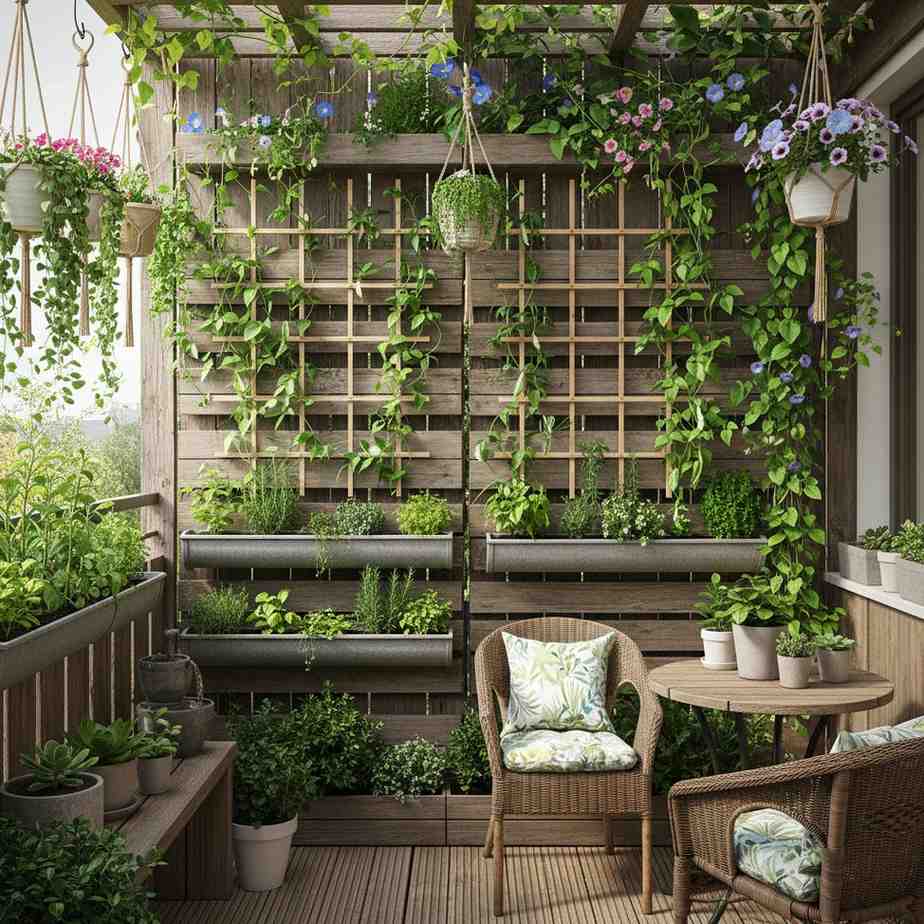
When you’re short on space, your only option is to go up. Vertical gardens allow you to use walls, fences, and stands to grow far more plants than you have space on the ground. You can DIY a vertical setup using wooden pallets, trellises, hanging planters, or gutters installed along your fence.
Plants such as kidney beans, peas, cucumbers, and flowering vines are natural vines that love to grow upwards. Growing vertically allows for better airflow around the plants, reduces disease problems, and makes it easier to harvest without having to bend over. The structure can be a simple bamboo stake or a fancy living wall filled with herbs and flowers.
7. Add decorative mulch

Using mulch will instantly give your garden a more organized look. You can use small pebbles, gravel, shells, pine cones, or anything that looks good. It’s not just about looks. Mulch retains moisture in the soil and prevents weeds.
Here are some tips to save money: Wood chips and bark mulch are often available for free from tree companies, municipal composting sites, or utility companies.
Just spread 2 to 3 inches around the plant. It protects the roots, maintains a constant soil temperature, and slowly decomposes to improve the soil. Gravel and decorative stones are long-lasting and perfect for succulent gardens and Mediterranean plants.
8. Paint the fence
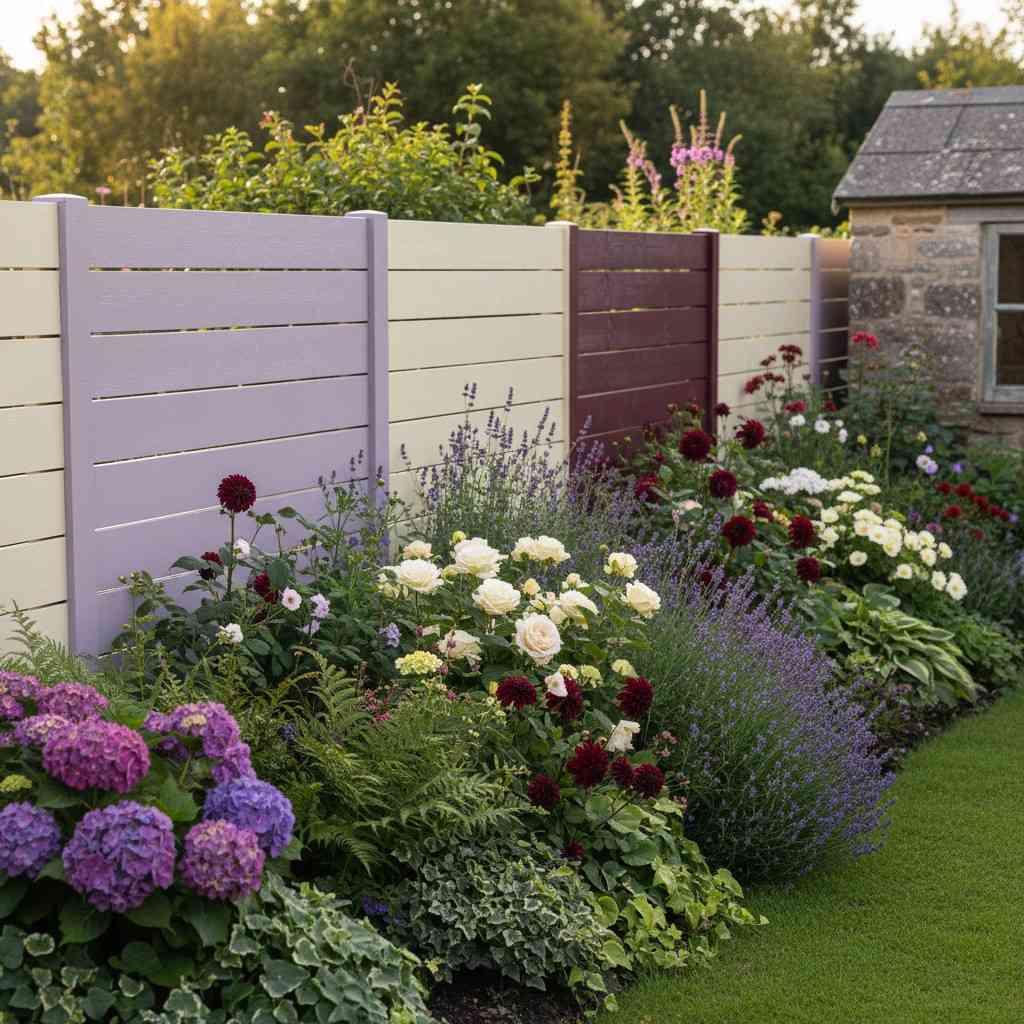
Want to easily give your garden a makeover? Get some paint and freshen up that tired looking fence. A fresh coat of paint looks great and protects the wood from weather damage. To make your flowers pop, try bold colors like lavender, cream, buff, and burgundy. Dark colors create a receding border and make a small garden feel larger.
This project is very inexpensive. Transform your space with just a pot or two of exterior paint and a brush or roller. Paint extends the life of your fence by preventing rot. You can match your fence to the color of your home or choose a shade that complements your plants. This is one of the best cost-effective projects.
9. Install a simple DIY birdbath
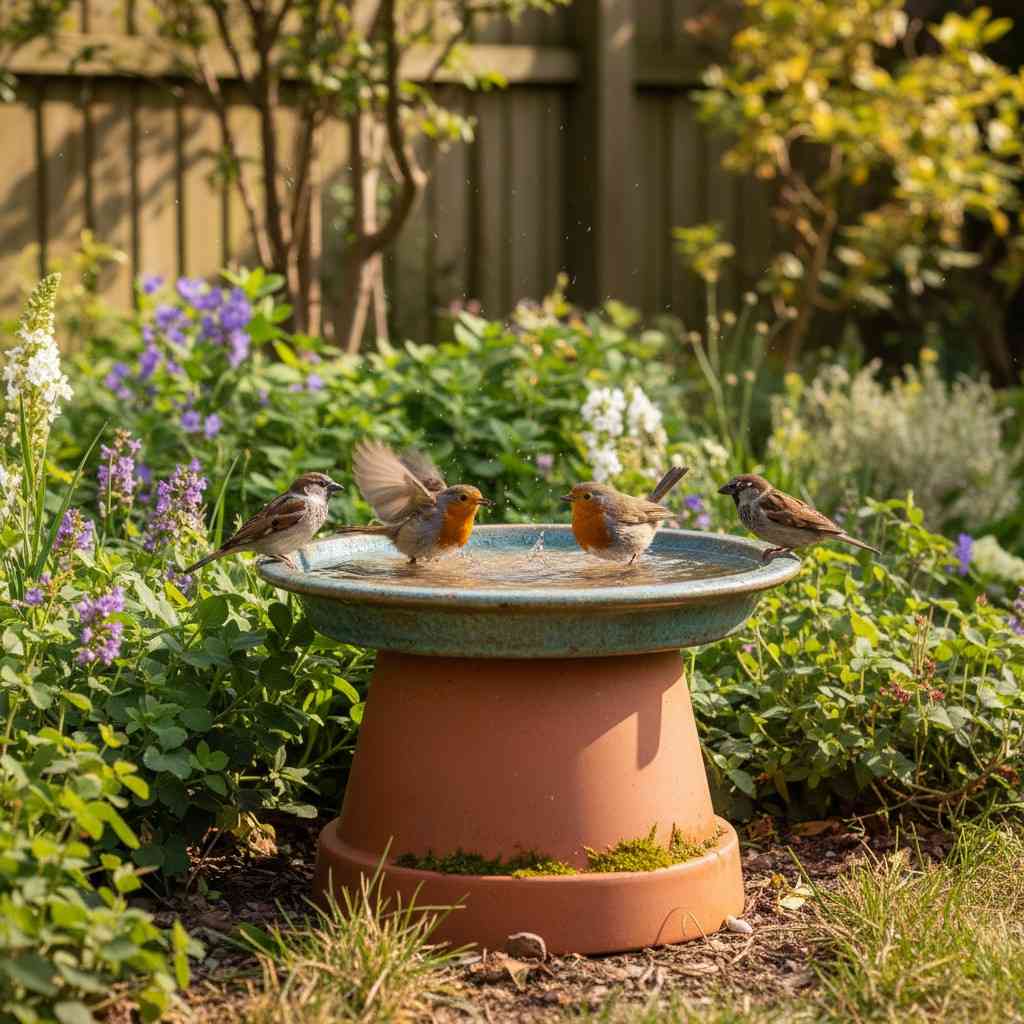
You can create a cute bird bath using just three things: a terracotta pot, a glaze saucer, and waterproof glue. Turn the pot over, glue the saucer on top (in the middle), let it dry and pour water. This is much cheaper than the high-end store version and looks just as good.
Birds hang out regularly to eat bugs and provide entertainment. The terracotta look fits any garden style and copes well with the weather. Place it in a visible location, but close to bushes, so the birds can quickly escape. Change the water every few days to prevent mosquitoes.
Also read: 29 Christmas Porch Decoration Ideas
10. Grow herbs in a small space

Herbs are basically the perfect budget plant. It’s very easy to grow, doesn’t require much space, and is actually used in cooking. Grow on a windowsill, in small containers, or in raised beds.
Favorites like basil, parsley, coriander, rosemary, thyme, and mint can be grown in pots without the need for deep containers. Growing your own means never buying expensive packages from the grocery store again.
Most herbs only require good drainage and sunlight, making them perfect for balconies, patios, or sunny windows. You can arrange them functionally or creatively with different colors and textures. Some herbs, such as rosemary and thyme, are perennials in warmer regions and will come back year after year without much effort.
11. Use stepping stones in your route
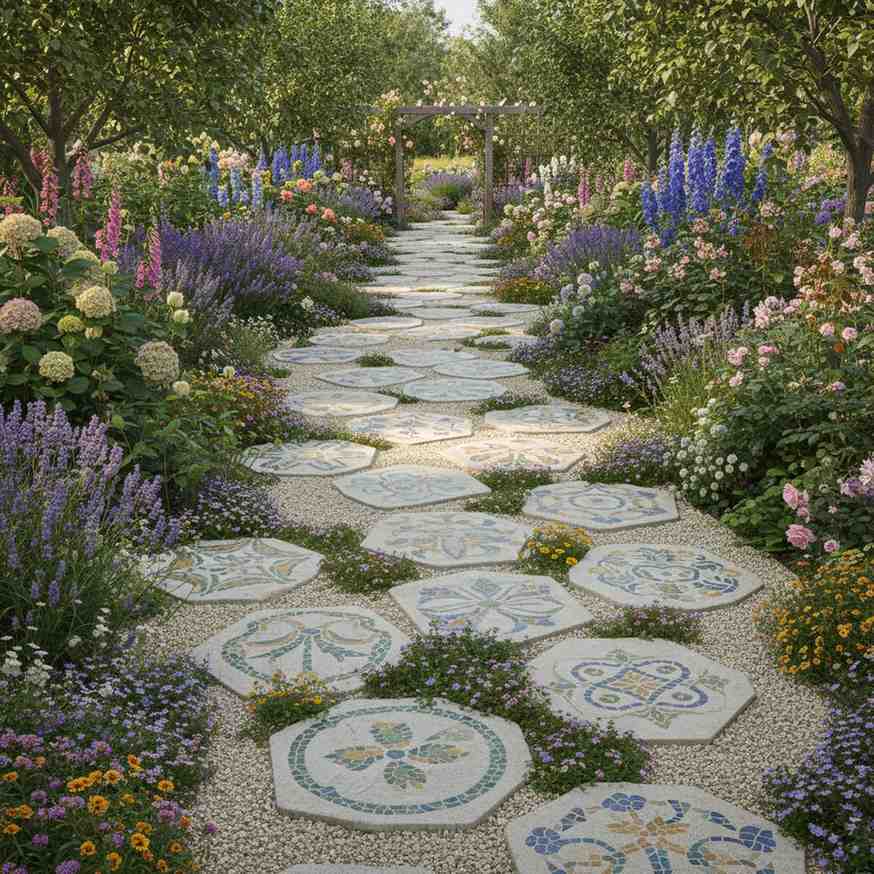
Stepping stone paths are both practical and beautiful, adding structure to your garden while preventing plants from being trampled. You can use natural stone, concrete pavers, or create your own using concrete molds. Direct people into the space and make watering and weeding easier.
Get creative by adding mosaics, engraving letters, or drawing designs on plain pavement. Making your own concrete stepping stones is cheap and fun. Space approximately 18 to 24 inches apart for comfortable walking.
Paths help define different garden areas and prevent soil compaction around plant roots. Finish the look by filling in the gaps between the stones with groundcover plants, pea gravel, or mulch.
12. Repurpose your wheelbarrow as a garden
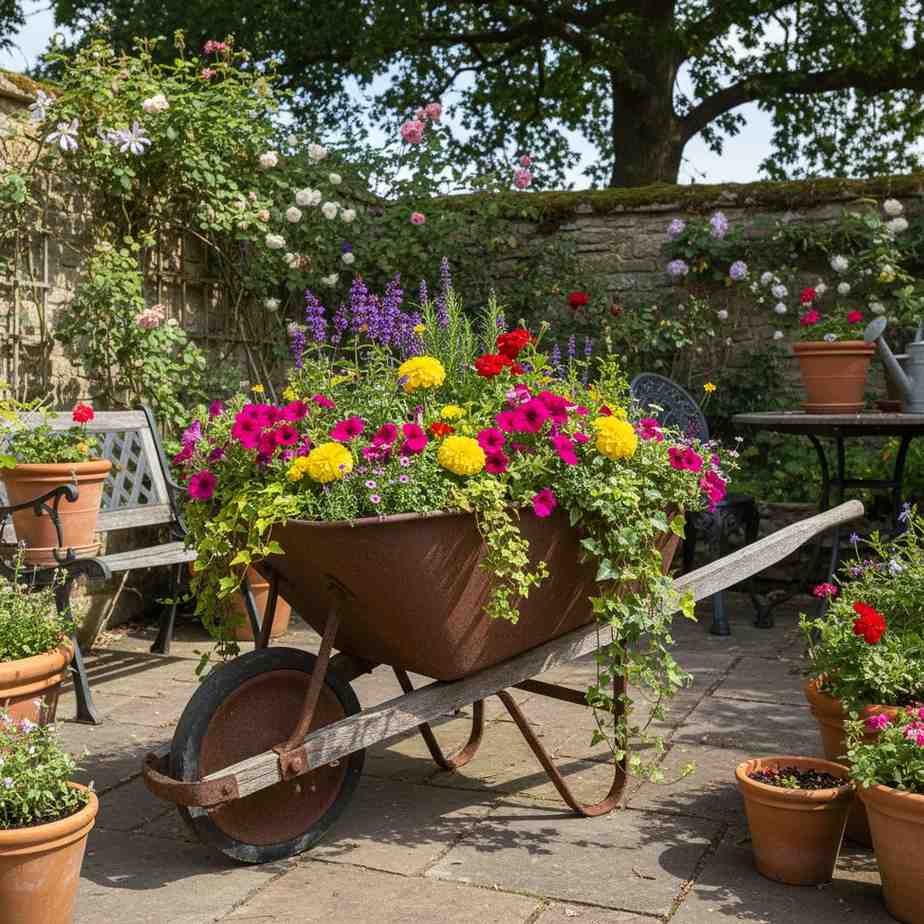
An old wheelbarrow makes a great rustic planter that you can move anywhere you want. Just make a drainage hole in the bottom, fill it with soil and plant. Their mobility allows them to follow the sun and rearrange things when people come.
If you already have a wheelbarrow, a vintage wheelbarrow is an inexpensive way to add some personality. It has plenty of depth for a larger root system and is well tolerated outdoors. Depending on your style, paint it a bright color or leave it rusted.
Perfect for seasonal displays, including spring bulbs, summer flowers, fall plants, and winter evergreens. The increased height makes planting and maintenance easier without putting strain on your back.
13. Add plant markers and labels
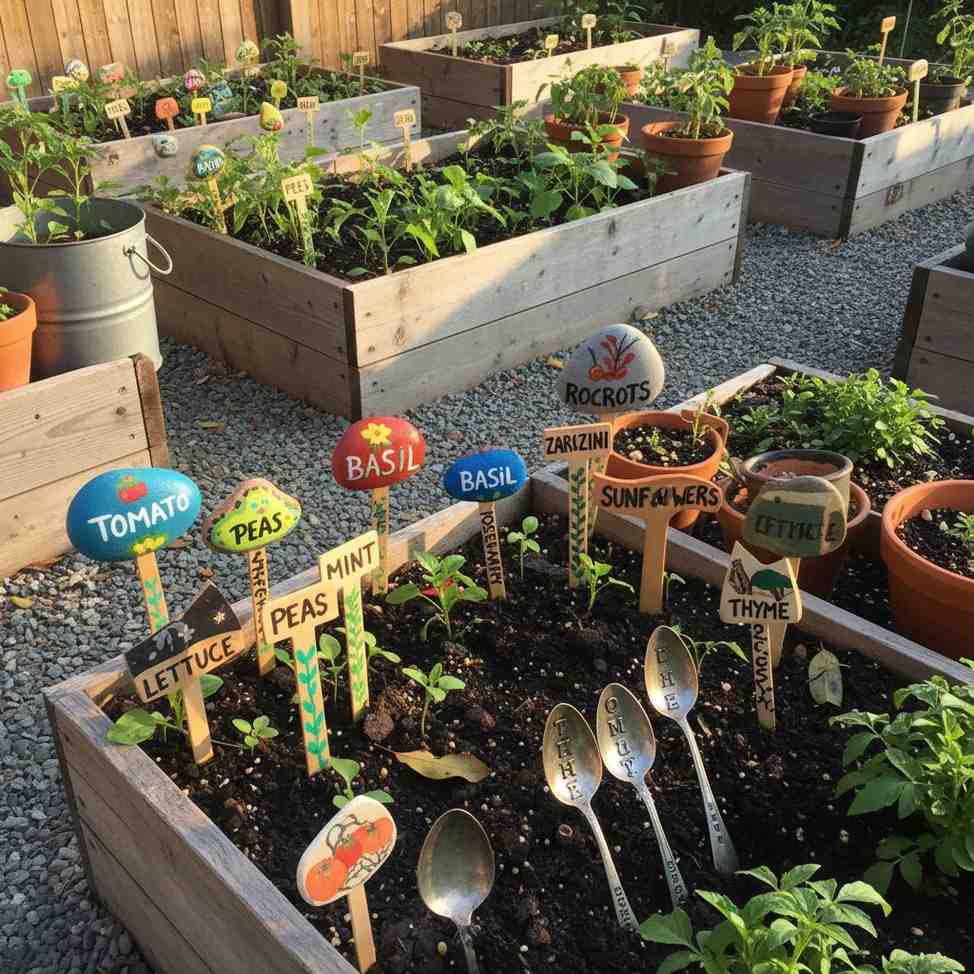
You’ll forget what you planted where faster than you think. Homemade markers made from painted rocks, craft sticks, broken pottery, old spoons, and more will help you keep track of everything. These are especially useful for different tomato varieties or for distinguishing between identical seedlings, and they also show planting dates and expected germination times.
DIY markers are practical while adding decorative flair. Use water-resistant markers and paints so they don’t fade. This basically costs nothing.
conclusion
It’s entirely possible to create a great garden on a budget. You just need to be a little creative and use what you have. These 13 ideas prove you don’t need expensive equipment, flashy designs, or expensive plants to create a garden you’re proud of.
By reusing things, choosing plants that are easy to care for, learning how to propagate, and going vertical when space is limited, you can grow something great without spending a fortune.
Whether it’s a small balcony or a modest backyard, the best gardens aren’t about how much you spend, they’re about creativity and hard work.

Khaja Moinuddin, a computer science graduate, enjoys gardening and homesteading. Join us on this blog where he shares his experiences with home growing, gardening, and composting.

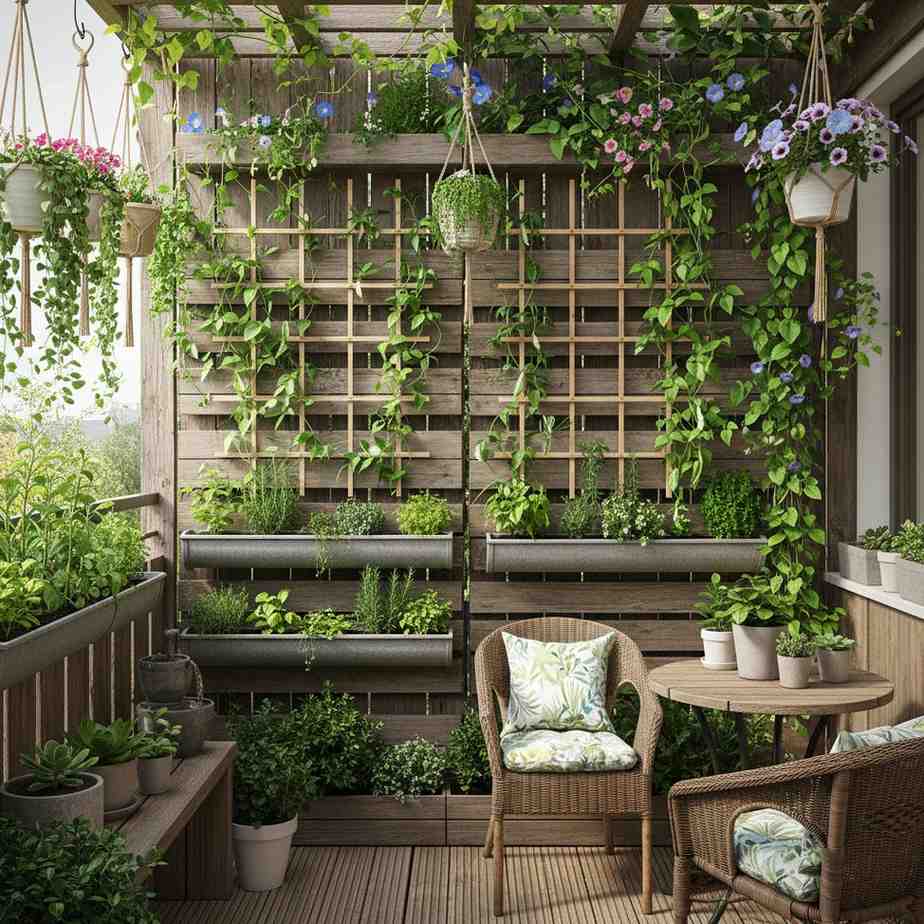

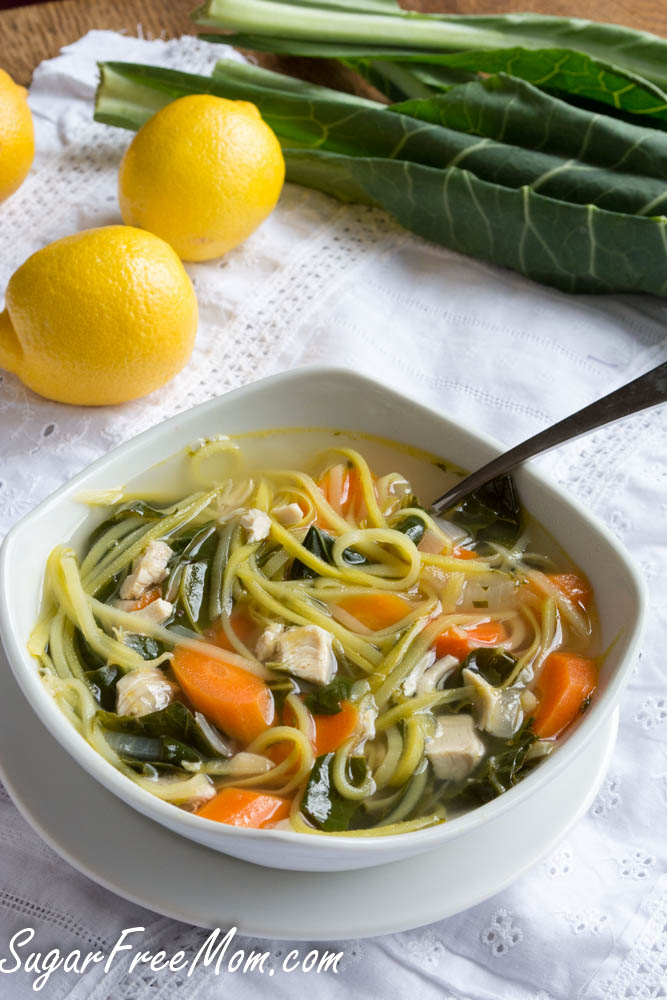
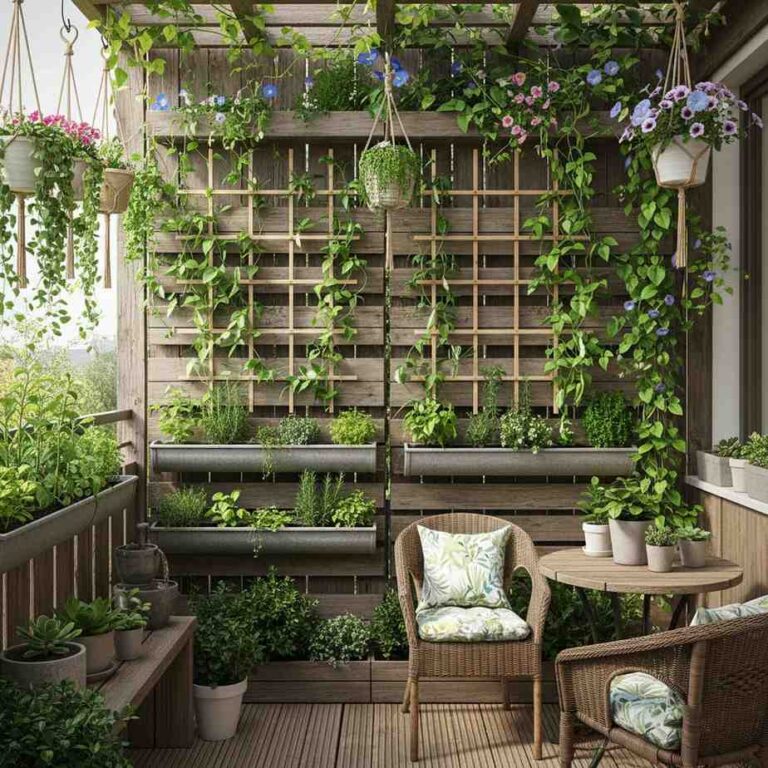
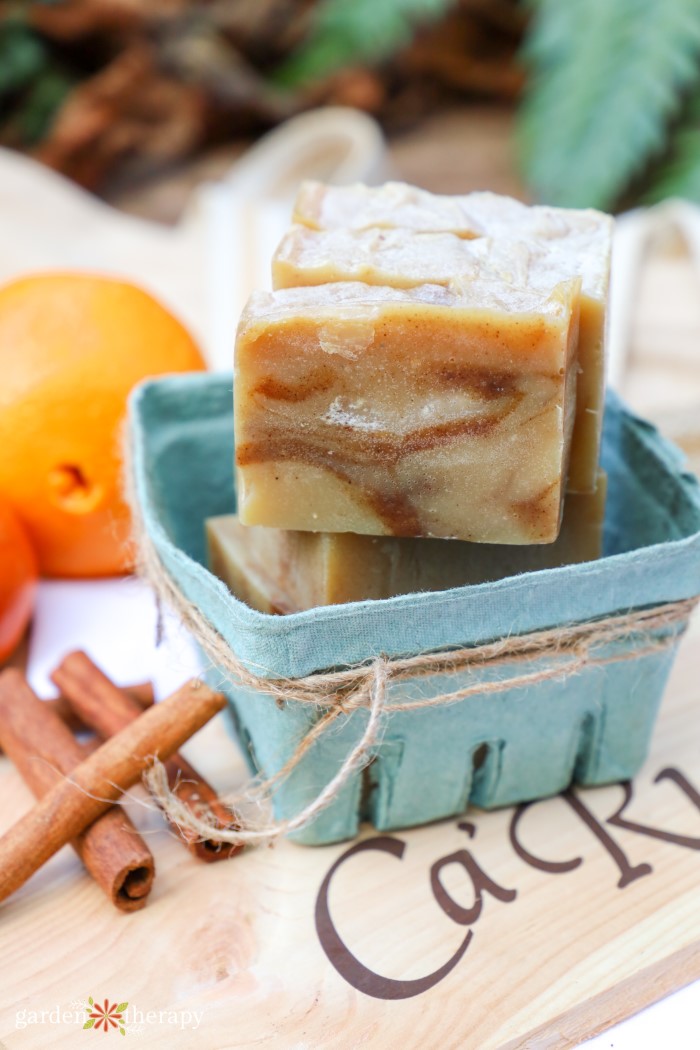
One Response
This post made my day. So helpful!